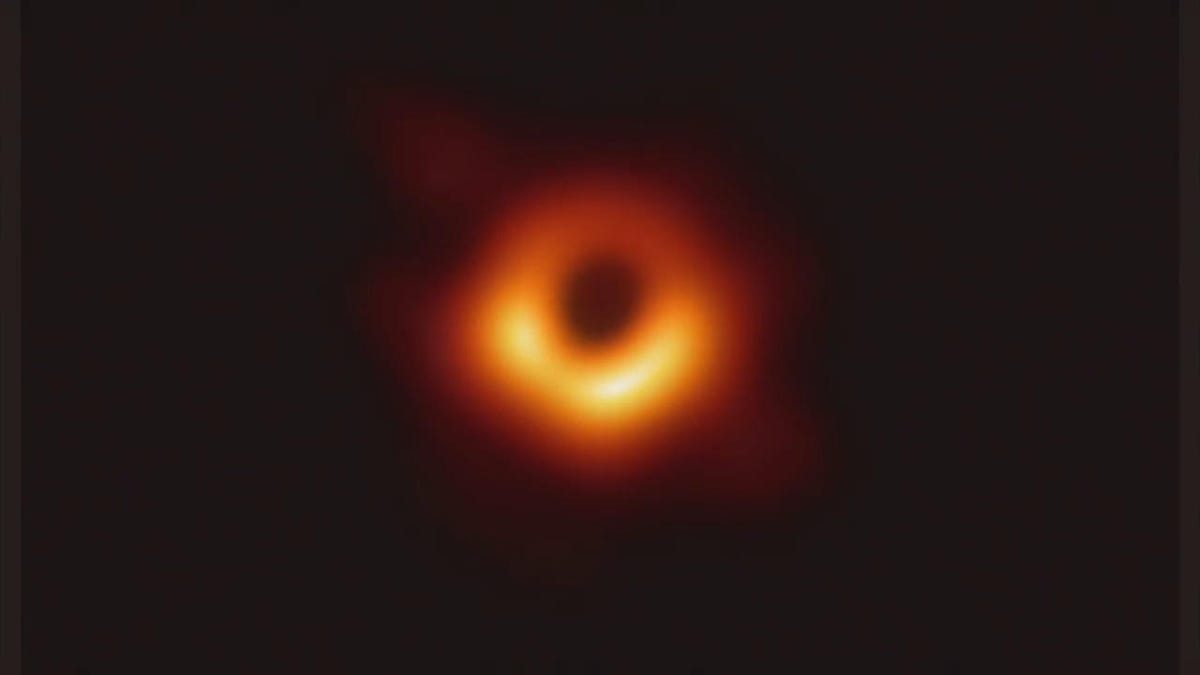Over 100 black holes have been hiding in the Milky Way all this time
Hide and seek on an unprecedented scale.

Imagine this, but over 100 of them all nestled within a star cluster.
Of all the things to find hidden in your own cosmic backyard, you probably wouldn't expect a black hole. Something of that size and impact would be fairly noticeable, you'd think. As it happens, you'd be wrong.
A study, published in the journal Nature on Monday, has discovered over 100 stellar-mass black holes hidden within a cluster of stars moving across the Milky Way. Conceptually that might sound alarming, but these ones are so far away that scientists aren't treating them as a direct threat to Earth. Instead they're taking this opportunity to learn more about our newfound neighbours.
The cluster in question, Palomar 5, is approximately 80,000 light-years away from us, with the stars themselves spaced up to 30,000 light-years away from each other within the cluster -- creating a stellar stream across the galaxy. But it's the black holes that have captured scientists' attention.
Mark Gieles, an astrophysicist from the University of Barcelona and lead author of the study, said, "The number of black holes is roughly three times larger than expected from the number of stars in the cluster, and it means that more than 20% of the total cluster mass is made up of black holes."
"They each have a mass of about 20 times the mass of the Sun and they formed in supernova explosions at the end of the lives of massive stars, when the cluster was still very young."
The discovery helps identify Palomar 5 as a tidal cluster, not a globular cluster. The difference lies within the spread of stars -- globular clusters consist of stars all formed around the same time, while tidal clusters feature an array of ages, loosely distributed in a stream.
Before now, the origins of tidal streams had only been hypothesized. Now, with further analysis of Palomar 5 -- a unique case -- Gieles' team was able to use N-body simulations to recreate the orbits and evolutions of the stars making up the cluster.
The results show that the cluster's tidal stream most likely was formed due to a significant number of black holes slingshotting stars out of the cluster. This effect relies on orbital interactions within the cluster and wouldn't be possible with fewer black holes.
Not only could this discovery help explain how these tidal streams form, but it also may be instrumental in narrowing down the rough age and amount of black holes within clusters like Palomar 5.
Simulations from the team showed that eventually -- in a billion years or so -- the cluster will begin to dissolve completely, but not before its composition changes to be more black hole than star.
"A big unknown in this scenario is how many black holes there are in clusters, which is hard to constrain observationally because we can not see black holes," said Fabio Antonini, an astrophysicist from Cardiff University. "Our method gives us a way to learn how many black holes there are in a star cluster by looking at the stars they eject."
So while you don't have to stress too much about being swallowed up by a fearsome swarm of black holes any time soon, there may be even more hidden within clusters we haven't yet analyzed.

